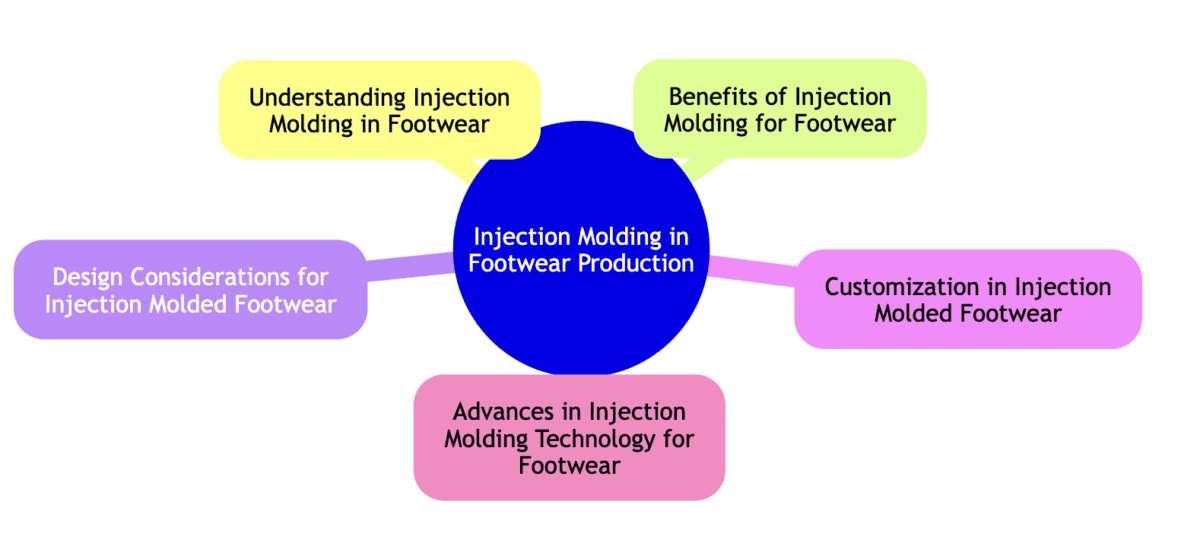Making Shoes with Injection Molding
Injection molding has become a fundamental process in modern footwear production.
Injection molding companies support high levels of customization and scalability, benefiting both manufacturers and consumers. Manufacturers can meet market demands quickly, while consumers enjoy high-quality, innovative footwear designs.
JDI Plastics is a trusted injection molding company with extensive experience and capabilities. Our goal is to exceed expectations, and we start with the highest-quality materials and processes. Trust JDI today!
Key Takeaways
- Injection molding allows for precise and consistent production of shoe components.
- Customization options cater to various design and functional requirements.
- High efficiency and scalability make it ideal for mass production.
- The process enhances durability and performance of footwear.
- Advances in technology continue to improve injection molding capabilities.

The Basics: Injection Molding in Footwear
Injection molding involves injecting molten material into a mold to create various components, including those used in footwear. Manufacturers favor this technique for its precision and ability to consistently produce complex shapes.
The process starts with designing the component and creating the mold. Then, inject molten material into the mold, let it cool, and collect the finished product. This cycle ensures that each part is identical and meets strict quality standards.
Injection molding is used to create soles, insoles, and other shoe components in the footwear industry.
Common materials include EVA (ethylene-vinyl acetate) and TPU (thermoplastic polyurethane). These materials offer excellent durability, flexibility, and comfort, making them ideal for footwear applications. Injection molding allows for incorporating various features, such as tread patterns for better grip or cushioning elements for enhanced comfort.
Benefits of Injection Molding in Footwear
Injection molding offers numerous advantages in the footwear industry. It enhances the production process and results in high-quality products.
Key Benefits
- Precision and Consistency: Each part meets exact specifications, leading to uniform quality.
- Customization: Unique designs and features can be easily incorporated to meet specific requirements.
- Efficiency: The process streamlines production, allowing large volumes to be produced quickly.
- Durability: Components made through injection molding are robust and long-lasting.
- Material Versatility: A variety of materials can be used, making it suitable for different parts of the shoe.
Design Considerations for Injection Molded Footwear
When designing injection molded footwear, several key factors impact the effectiveness and quality of the final product. Proper design ensures that the footwear is functional, comfortable, and durable. (1)
- Ergonomics: Comfort and fit are paramount. The design should support the natural movement of the foot.
- Aesthetics: The footwear should meet the desired look and style, appealing to consumer preferences.
- Functionality: Features like flexibility and support should be integrated to enhance performance.
- Durability: Selecting materials that withstand wear and tear ensures longevity.
- Sustainability: Using eco-friendly materials and processes helps reduce environmental impact.
Customization in Injection Molded Footwear
Personalized Designs
Injection molding facilitates the creation of personalized footwear designs. This method caters to individual preferences and needs, allowing for custom fits and styles that stand out from mass-produced alternatives.
Functional Enhancements
Customizing footwear components can significantly enhance performance. Features like improved grip, better support, and specialized cushioning can be integrated to meet the specific demands of different activities or user requirements.
Brand Differentiation
Brands can leverage injection molding to create unique and distinctive products. This differentiation helps brands stand out in a crowded market, offering consumers innovative and tailored footwear options.
Advances in Injection Molding Technology for Footwear
Recent advancements in injection molding have significantly benefited the footwear industry. These innovations enhance efficiency, quality, and capabilities in the production process.
Key Technological Advancements
- Advanced Materials: New polymers offer better performance, enhancing durability, flexibility, and comfort.
- Automated Systems: Integration of IoT and robotics allows for precise control and increased production speed.
- Sustainable Practices: Eco-friendly materials and waste reduction techniques make the process more environmentally friendly.
- 3D Printing Integration: Combining traditional and additive manufacturing methods enhances customization and prototyping.
- Enhanced Mold Design: Simulation tools optimize mold creation, improving accuracy and reducing production time.
Injection Molded Footwear with JDI Plastics
Injection molding is a critical component in modern footwear manufacturing. Its capabilities perfectly suit the needs of the shoe industry. Shoes like Crocs are almost entirely made from a single mold! How efficient and profitable is that?
If you would like to increase the efficiency and precision of your footwear manufacturing, JDI Plastics is waiting for your call. Our equipment and expertise are top-of-the-line and we want to bring you the same success as the rest of our clients!
Visit us at JDIPLASTICS today!
References:
(1) SoleScience, How Shoes Are Made – The History of Shoemaking, https://www.solescience.ca/history-of-shoemaking/
